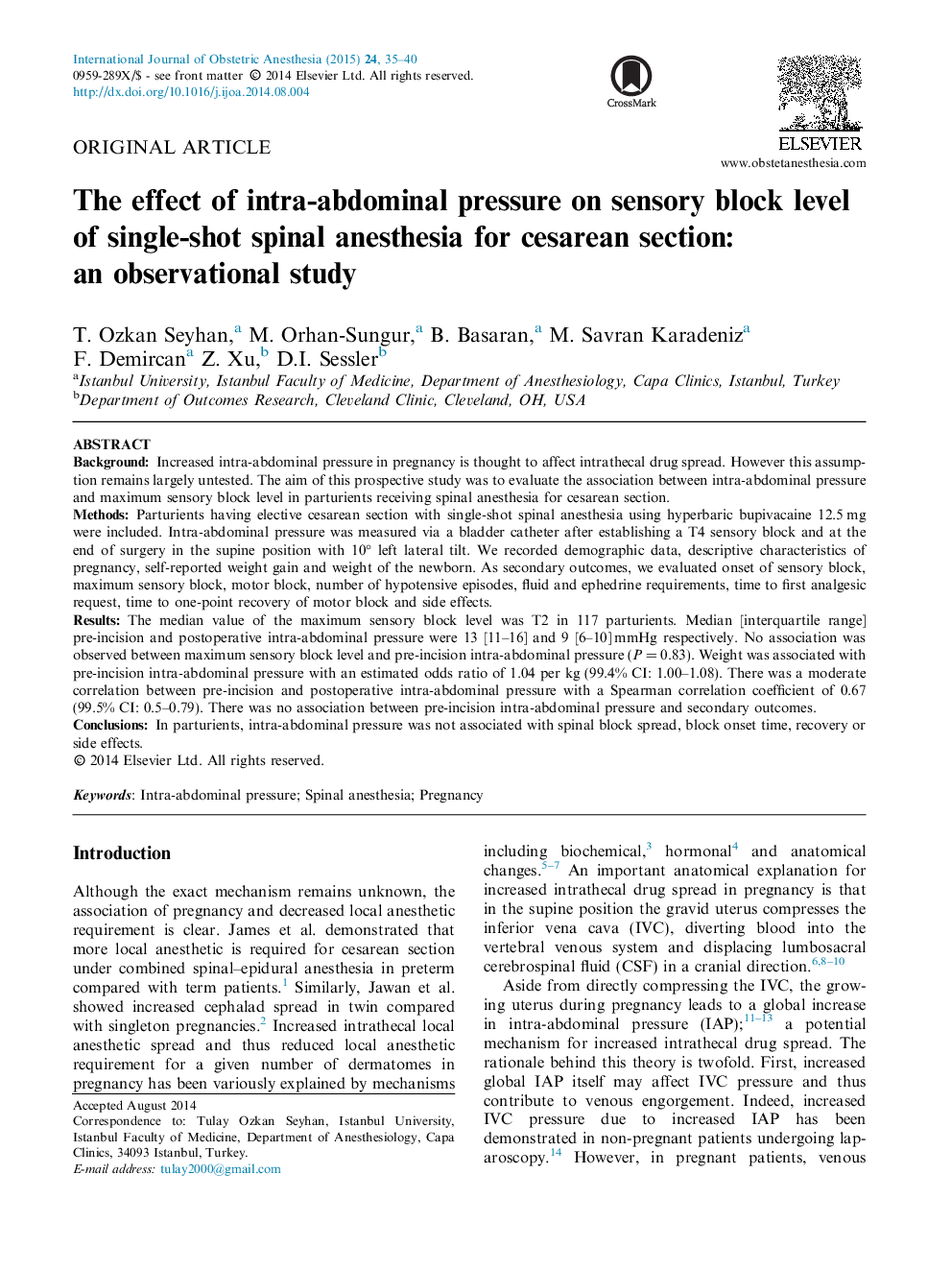| Article ID | Journal | Published Year | Pages | File Type |
|---|---|---|---|---|
| 2757555 | International Journal of Obstetric Anesthesia | 2015 | 6 Pages |
•We studied the spread of intrathecal local anesthetics in parturients undergoing cesarean section.•We evaluated the association between intra-abdominal pressure (IAP) and spinal block.•IAP was unrelated to maximum sensory level and other block characteristics.•Increased IAP does not appear to be the mechanism for higher blocks in pregnant patients.
BackgroundIncreased intra-abdominal pressure in pregnancy is thought to affect intrathecal drug spread. However this assumption remains largely untested. The aim of this prospective study was to evaluate the association between intra-abdominal pressure and maximum sensory block level in parturients receiving spinal anesthesia for cesarean section.MethodsParturients having elective cesarean section with single-shot spinal anesthesia using hyperbaric bupivacaine 12.5 mg were included. Intra-abdominal pressure was measured via a bladder catheter after establishing a T4 sensory block and at the end of surgery in the supine position with 10° left lateral tilt. We recorded demographic data, descriptive characteristics of pregnancy, self-reported weight gain and weight of the newborn. As secondary outcomes, we evaluated onset of sensory block, maximum sensory block, motor block, number of hypotensive episodes, fluid and ephedrine requirements, time to first analgesic request, time to one-point recovery of motor block and side effects.ResultsThe median value of the maximum sensory block level was T2 in 117 parturients. Median [interquartile range] pre-incision and postoperative intra-abdominal pressure were 13 [11–16] and 9 [6–10] mmHg respectively. No association was observed between maximum sensory block level and pre-incision intra-abdominal pressure (P = 0.83). Weight was associated with pre-incision intra-abdominal pressure with an estimated odds ratio of 1.04 per kg (99.4% CI: 1.00–1.08). There was a moderate correlation between pre-incision and postoperative intra-abdominal pressure with a Spearman correlation coefficient of 0.67 (99.5% CI: 0.5–0.79). There was no association between pre-incision intra-abdominal pressure and secondary outcomes.ConclusionsIn parturients, intra-abdominal pressure was not associated with spinal block spread, block onset time, recovery or side effects.
